This article is a comprehensive guide about naturally gluten free flours with tips on how to use them in baking and cooking.
We will be going through gluten free flours from cereals, pseudocereals, legumes and beans, nuts, tubers, fruit and vegetables.
Pin this article so you can come back to it whenever you need!
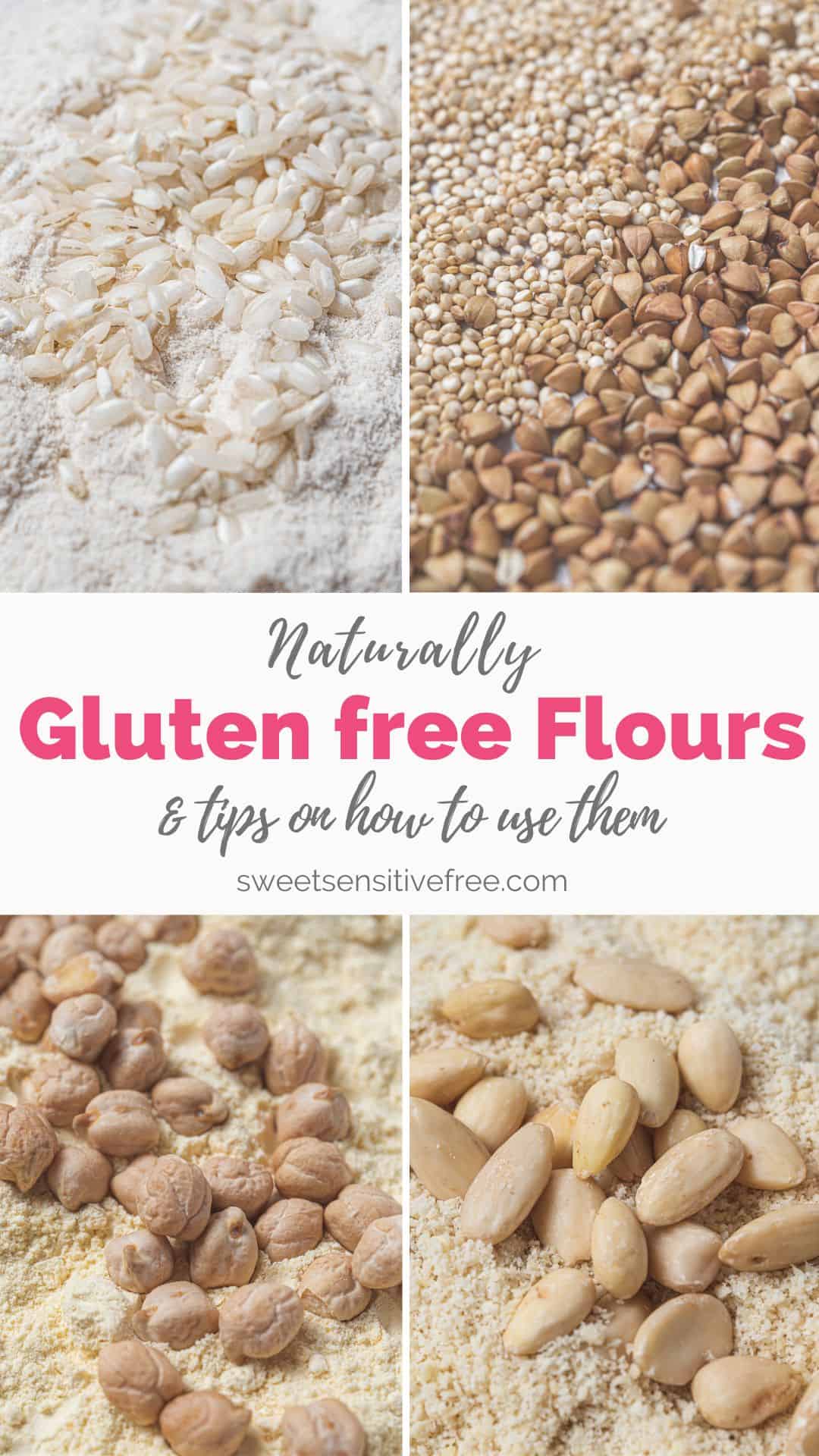
Jump to:
My first encounter with the gluten free world goes back to a few years ago, when I met my boyfriend, who is sensitive not just to gluten, but to corn too (and dairy and eggs).
I was familiar with milk/dairy intolerance, as I have to limit them myself, but gluten intolerance was a new, unknown territory for me.
When he first found out about his food intolerances, it sure was a shock.
This goes back to more than 15 years ag. After leaving the doctor’s office that day, he remembers roaming through the grocery store aisles and coming out with nothing more than rice and a few vegetables. And he didn’t even like veggies, he had to learn to enjoy them eventually.
Fortunately times change and it is now way easier to find gluten free flours and products in general.
So, following my own motto “food is happiness and everyone should be able to enjoy it”, I started documenting myself, searching for flours that are naturally gluten free, experimenting and learning to cook and bake gluten free (and often vegan too).
Both for necessity and by choice, I mostly use flours that are gluten free per se, and mix them.
I hardly ever use commercial gluten free flour mixes, both because most of the time they contain corn and because I often don’t appreciate the ingredients in them (high in sugar, salt, thickeners).
So, let’s see what flours are gluten free!
And remember: whichever you buy, always make sure it is labeled or certified gluten free.
Gluten free flours from cereals
After finding out about gluten sensitivity and celiac, one of the very first things we think about is how will I make bread, cakes, pasta or pizza?
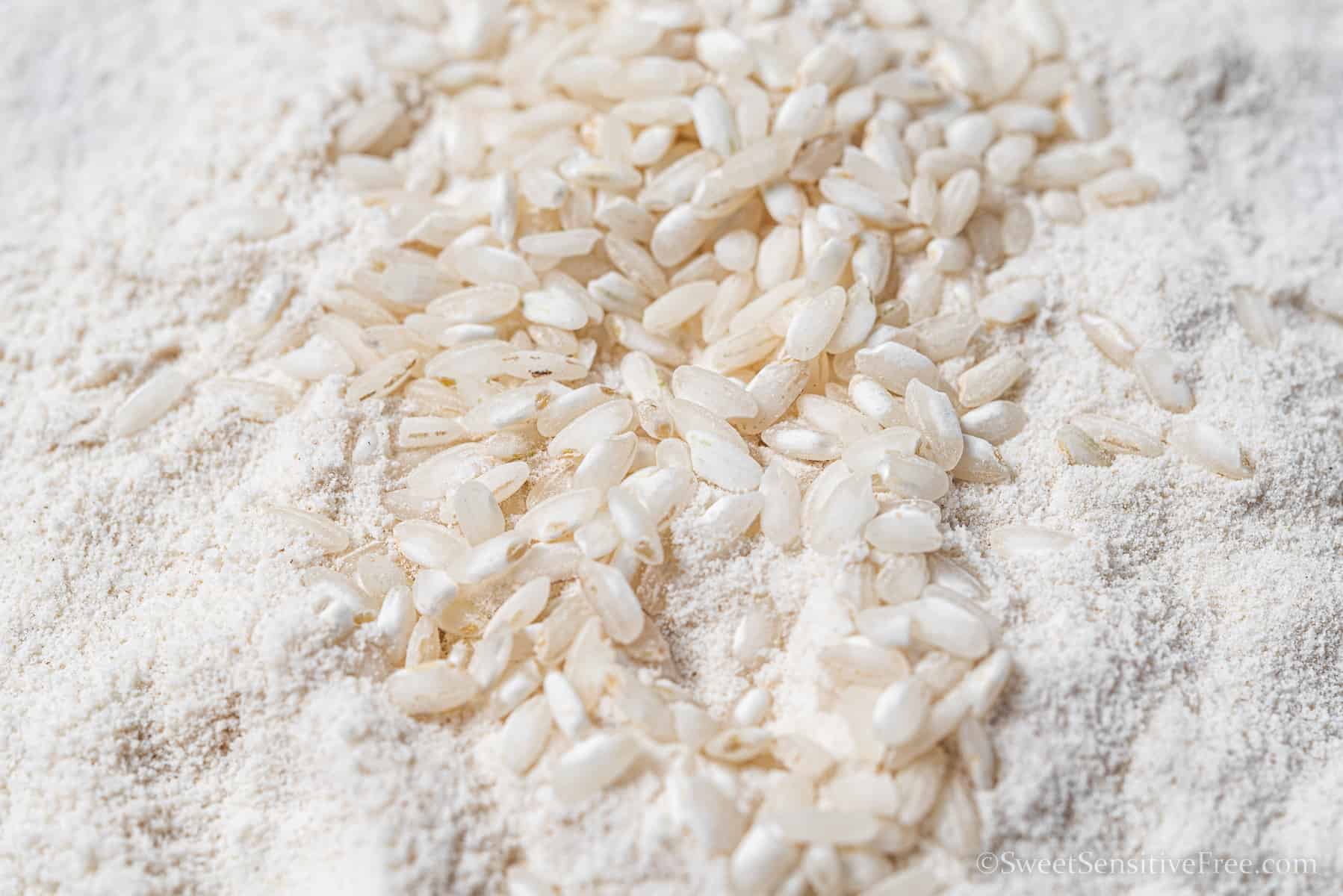
With the due adjustments, these can all be made with gluten free flours. And cereals definitely are the first option we tend to consider.
So, which cereals are gluten free?
Rice. Rice flour is one of the first alternatives to traditional flours. It is rich in vitamins and minerals and it can be found in its whole (brown rice) or white (refined) version. You can also find black and red rice flour.
I especially like to use brown rice flour in cakes/tarts and breads, as it has a neutral flavor and it gives them a light texture, while I prefer white rice flour as a thickener or in preparations that need to be more “elastic” and chewy, like these gluten free tortilla wraps, these dumplings or these lasagna noodles.
Corn. Together with rice flour, corn flour is the first alternative to flours without gluten. It gives baked goodies a soft texture, doughs and batter stick better together and its almost neutral flavor makes it very versatile.
Unfortunately, there is an increase in corn sensitivity (possibly due to GMOs), so if possible opt for organic options.
Millet. Millet is an ancient grain, it is rich in protein, minerals and antioxidants. Millet flour is usually whole grain, it has a unique, rustic flavor, I especially like to add it to gluten free savory tarts, like this vegan quiche or to make this millet olive bread.
Sorghum. Sorghum too is an ancient grain, rich in iron, vitamins and antioxidants. Sorghum flour is great in cakes, breads and cookies.
Teff. Teff flour is high in proteins, vitamins and minerals. It is a great gluten free flour for bread and baking in general. Its lightly nutty flavor makes it perfect for cookies too.
It usually calls for more liquids in batters/doughs, so keep that in mind to avoid dry textures.
A side note about oat. Oat flour is widely used as a gluten free flour and it is very versatile for baking cakes, cupcakes and cookies. Its use though is regulated differently, depending on the country where it’s grown. Here in Italy, for instance, it is only considered safe if it’s labeled “certified gluten free”, as oat plantations often are next to wheat or barley plantations, so the risk for cross contamination is high, if not certain. So, wherever you live, make sure it is certified gluten free and try it in small amounts, as in general it may not be well tolerated if your are gluten sensitive.
Gluten free flours from pseudocereals (or pseudograins)
After seeing which cereals are gluten free, the list of flours that are gluten free continues with pseudocereals, as in non-grass plants whose fruits are kernels similar to actual cereals, also in their nutrients.
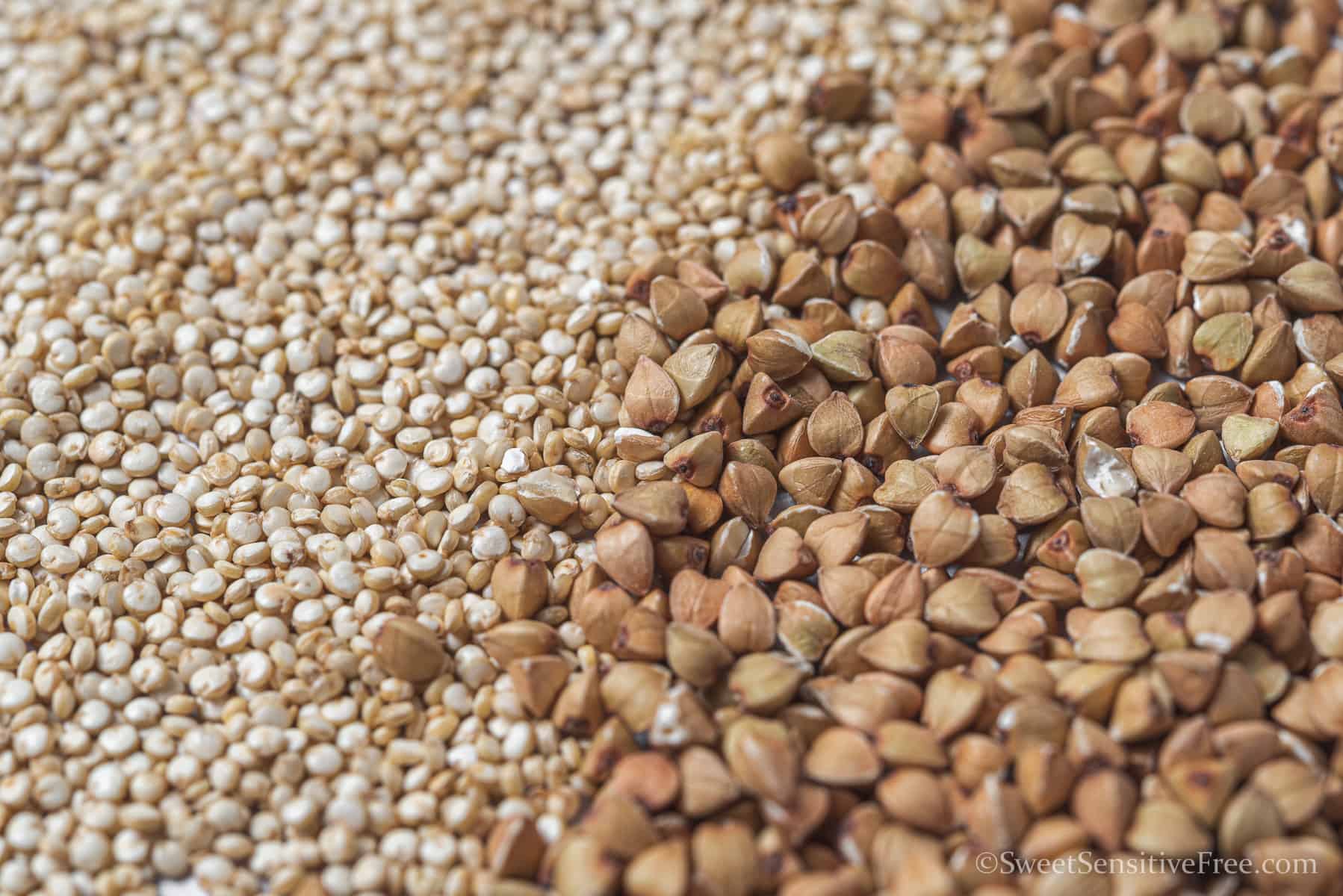
Pseudocereals are great alternatives in a gluten free diet (and for diabetes too). They are naturally rich in fibers, vitamins, minerals and antioxidants.
Buckwheat. Despite its name, it has nothing to do with wheat and contains no gluten. Its seeds can be cooked and eaten as is, but they also make a great gluten free flour. It is rich in minerals and vitamins and has a very low glycemic index (G.I.)
Buckwheat flour is usually whole “grain” and has an intense, rustic flavor. It is great both for baking bread - like this gluten free buckwheat bread - tarts and cookies, like this and these.
Quinoa. It is considered a superfood pseudocereal for its high content of proteins, fibers, antioxidants and its anti inflammatory properties. As for the buckwheat, its seeds can be cooked and eaten whole, or transformed into a light flour with a slightly bitter and nutty flavor.
I like to use it in my baked goodies, like this gluten free yeast free bread.
Amaranth. This gluten free flour too is rich in proteins and fibers and has a low G.I.
Like quinoa flour, it has a slightly bitter and nutty flavor, I like to use it in breads and also in this gluten free protein green pea pancakes.
Hemp. Hemp flour too is made from its seeds and it can be considered a pseudocereal. It is high in carbs and low fat. It can be successfully used for baking bread.
Flours from legumes and beans
Several dried legumes and beans can be transformed into flours. They are rich in proteins and iron and are often used as meat substitutes in vegan and vegetarian diets.
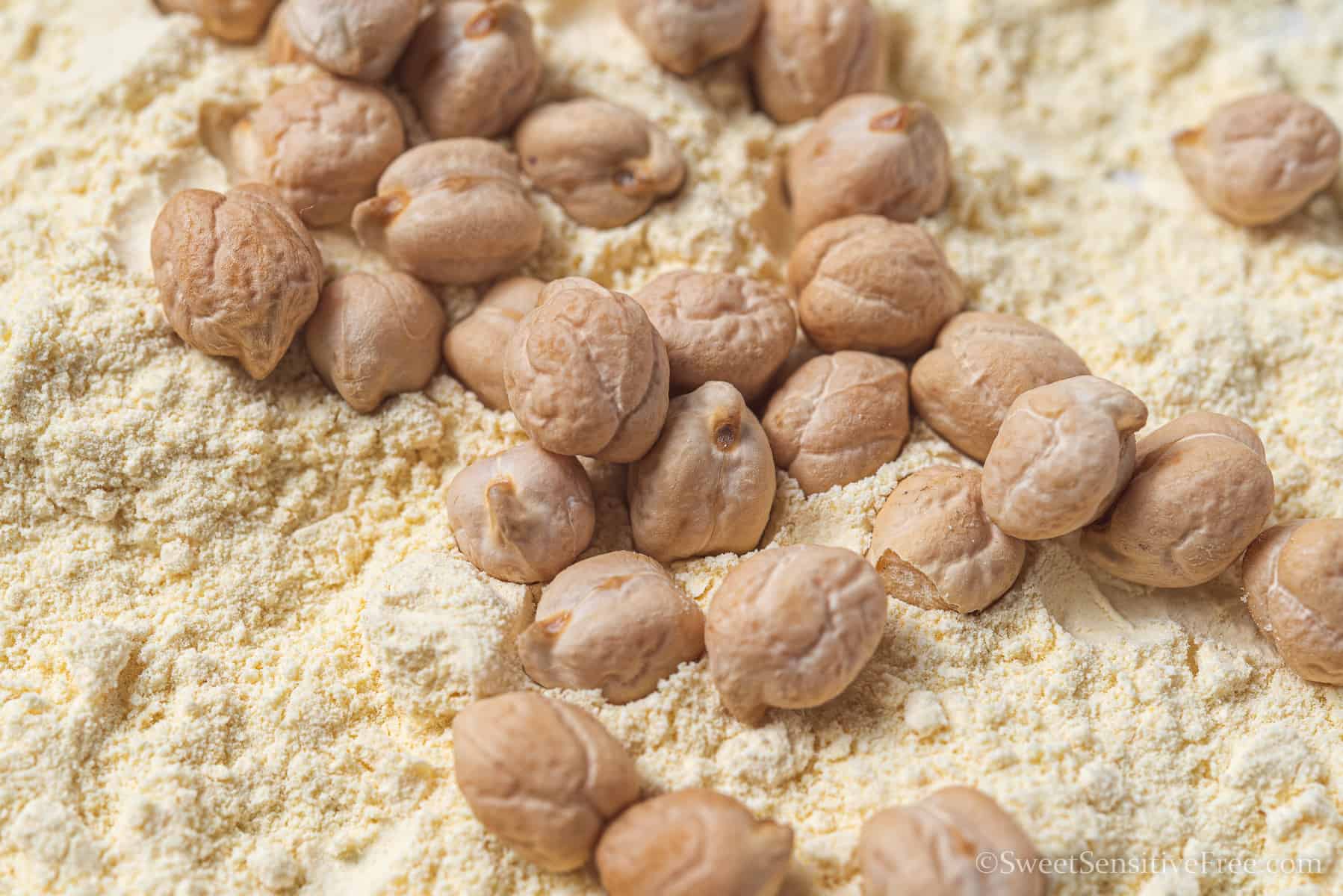
Chickpeas. Chickpea flour (or garbanzo bean flour) is the most common - and easy to find - gluten free legume flour. It is great used on its own to cook - among other recipes - vegan frittata and chickpea fries. It is also a good thickener in baked goods, like these choco-gingerbread donuts, but it has to be added in small amounts, especially if you don’t particularly enjoy its egg-y flavor.
Lentils. Lentil flour is similar to chickpea flour, it is mostly used as a thickener in soups, but also mixed to other flours to bake goods like bread, cakes and cookies or as a binder for patties and “meat” (veggie) balls.
Peas. Pea flour is high in protein, carbs, fibers, minerals and vitamins. It is often used as a substitute of animal proteins in protein shakes. I love to make these protein gluten free green pea pancakes with it.
Soy. Soy bean flour too is high in protein and a commonly used thickener in gluten free preparations. Adding soy bean flour to muffins, cakes or pancakes will make them nice and soft.
Carob. Many may not know it, but carobs are legumes. Carob flour is widely used as a thickener in packaged food and it can be used as cacao substitute in cakes, cupcakes, etc. for those who suffer from nickel sensitivity.
Carob flour is gluten free, high in proteins, minerals, iron and has a low G.I.
Lupin. Lupin bean flour has the same properties and uses as the above mentioned legumes, especially chickpeas, in fact you can easily use it make vegan frittata, by replacing the chickpea flour.
Flours from nuts and seeds
Nut flours are naturally gluten free and widely used in gluten free baking and cooking.
The most commonly used nut flours are those made from almonds, hazelnuts, pistachios and chestnuts.
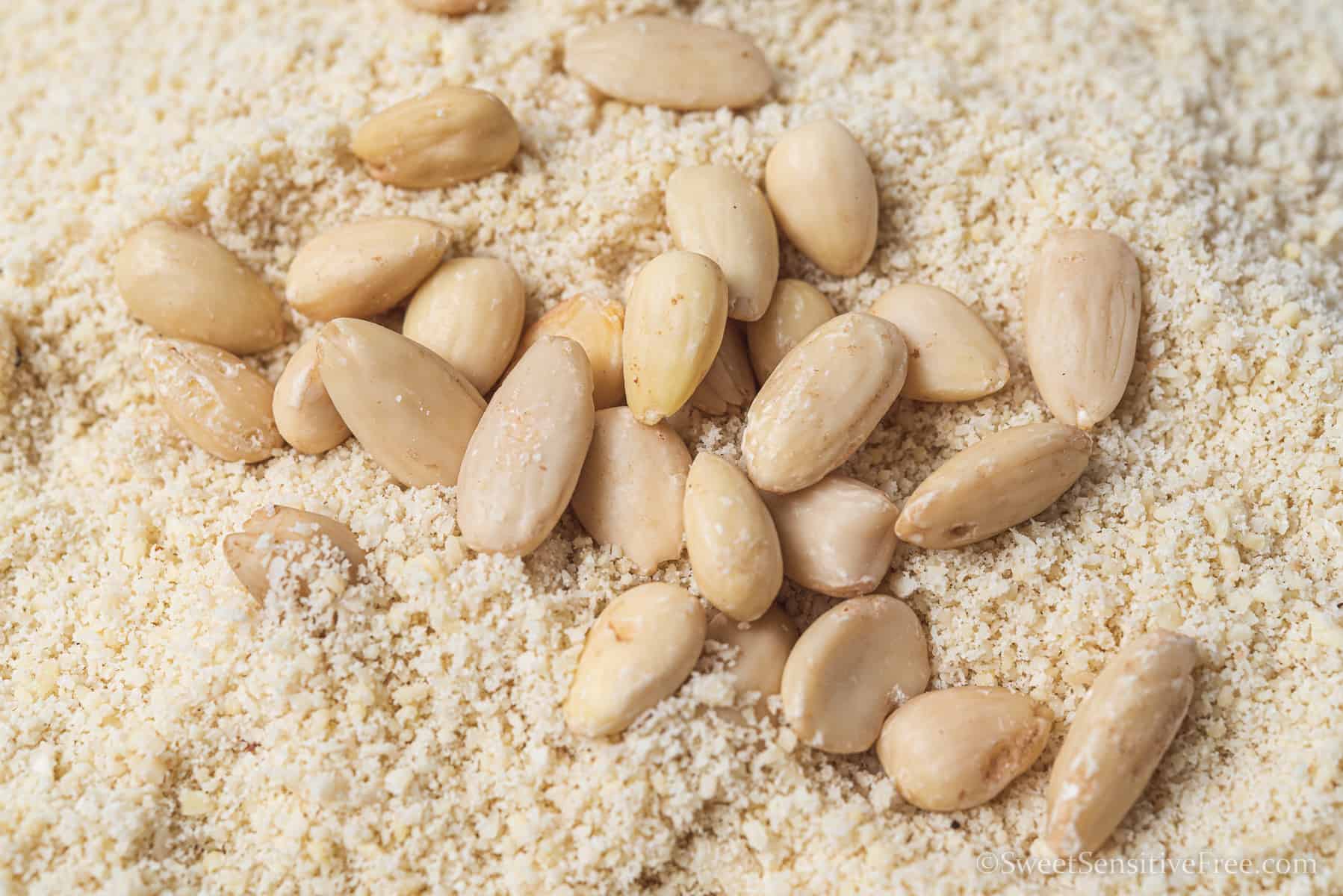
They are not only great in cakes and cookies, but also a healthy addition to milkshakes, thanks to their properties, as they are high in good fats, protein, fibers, antioxidants and minerals.
I love to use almond flour to make tarts, like this gluten free oil tart crust, or in this oat free fruit crumble.
Seeds too can be used to make gluten free flours, they are rich in protein, healthy fats and fibers. While seeds include sesame, sunflower, flax, pumpkin, poppy and chia, the most commonly used seed flours are those made from flax and sunflower.
They are both used as a healthy addition to milk/fruit shakes, but also widely used as a binder in gluten free baking and cooking. One tablespoon of ground flaxseeds mixed with 2-3 tablespoons of water creates a gelatinous mix used as an egg replacer or a binder in general, like in these gluten free buns or these vegan gluten free waffles.
Flours from tubers
Tubers are a great source of gluten free flours too. They are usually high in starches, which makes them very useful, especially in gluten free baking, as they work as natural binder when mixed with other naturally gluten free flours.
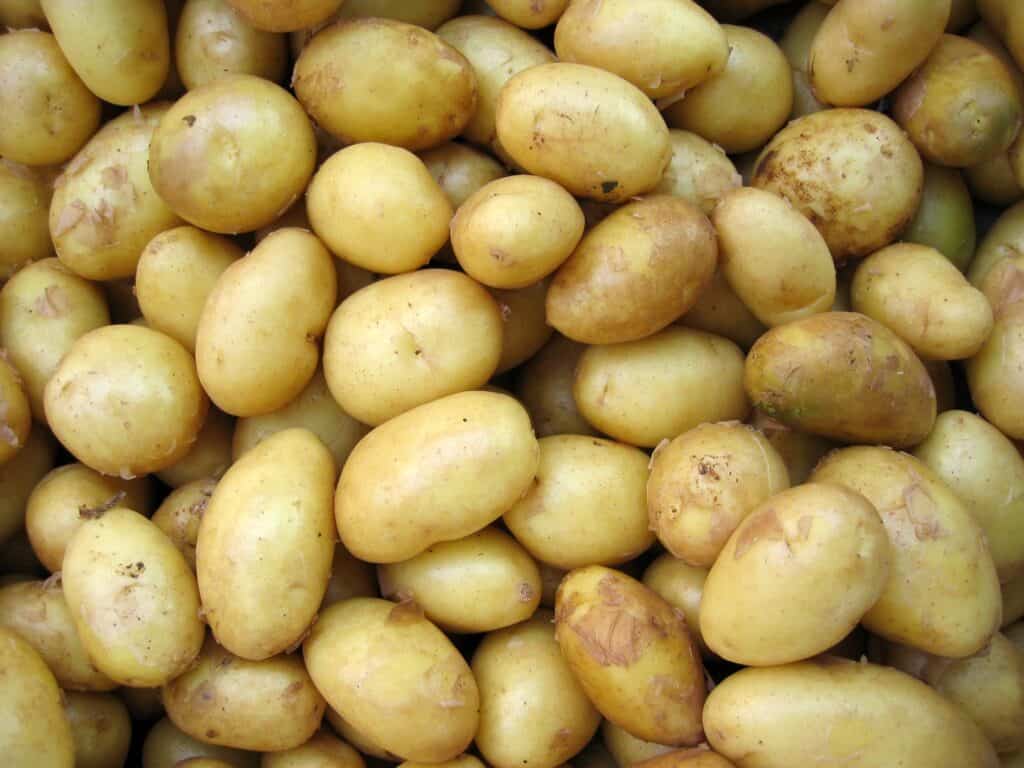
Most common flours that are gluten free and made from tubers are manioc or cassava flour, potato flour and tiger nut flour.
Despite its name, tiger nut flour is not made from nuts but from a tuber. Its content of starch and slight sweet flavor makes it a great binder for baked gluten free sweets.
A side note about gluten free starches. Starches are refined and very fine flours usually made from tubers or grains. They are fundamental in gluten free baking, as they work as a binder when mixed with other gluten free flours and they also help to get a softer texture.
What are gluten free starches? Naturally gluten free starches are from corn, rice, potato, tapioca/cassava and arrowroot.
Flours from other fruits and vegetables
Nature offers several other options for flours that are gluten free.
In fact, especially in gluten free baking, you can also use coconut flour and banana flour, but I’ve recently discovered some interesting options, like apple flour, pumpkin and squash flour, carrot, broccoli and kale flour.
These are very interesting, as they can be added to your doughs and batter to both increase their nutrients and add a fun touch of color too!
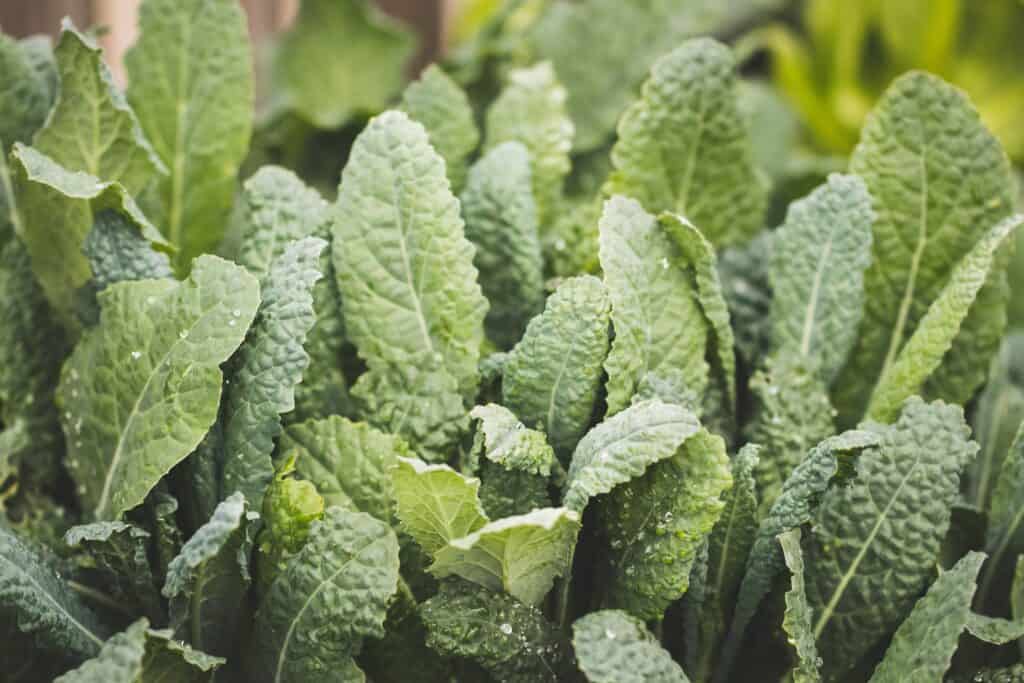
I really hope this article helps you have a clearer idea of what are gluten free flours. I totally understand how lost one can feel when finding out about celiac and gluten sensitivity, but as you can see there are so many options.
It does take some time to adjust to new flavors and textures, but it sure is an opportunity to widen our views and consider different foods, that help us improve our intake of healthy nutrients too, as legumes, pseudocereals, nuts and seeds do.
Also, unlike specific commercial gluten free flours mixes, flours that are naturally gluten free can easily be sourced in most countries around the world nowadays and by mixing them you can create delicious recipes for breakfast, main dishes, breads, cakes and tarts!
So let me know in the comments down below if you found this article helpful and if you have already tried any of these flours that are gluten free, which is your favorite?
And don’t forget to follow me on Instagram and Facebook for all the updates!
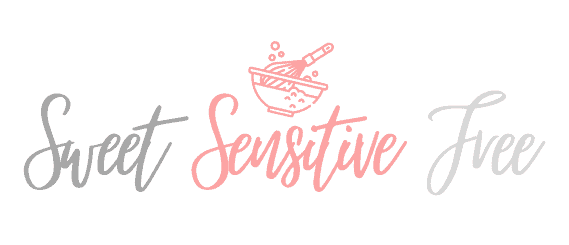

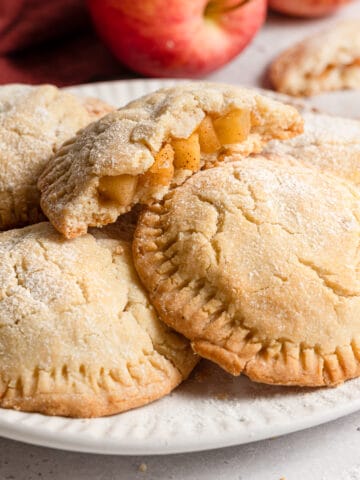
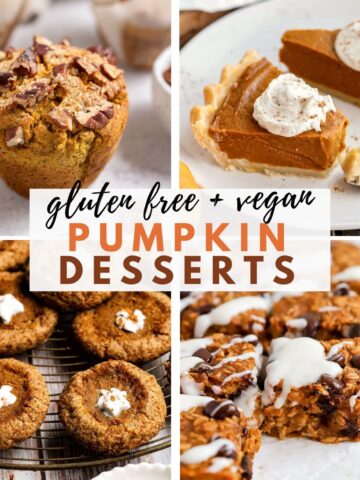
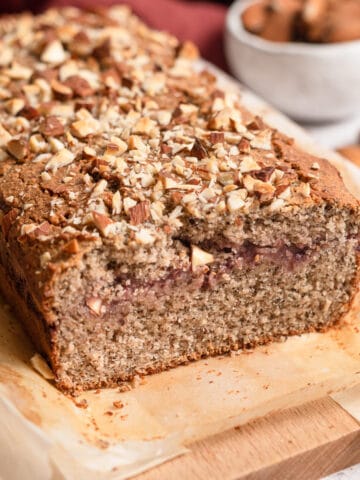
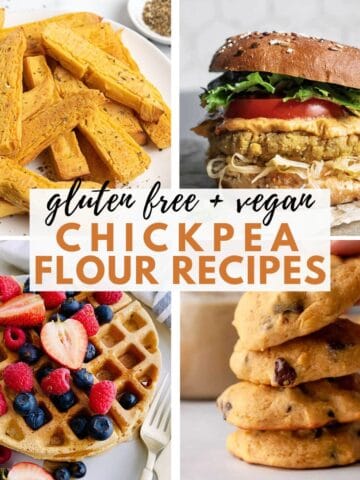
Tina says
Thank you for this article, it was very informative! My daughter has been diagnosed with celiac just the other day and what flours to use was one of my first worries. Now I know
Sweet Sensitive Free says
Thank YOU Tina for your kind comment! I am so glad it was helpful!